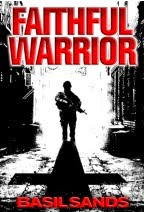“Learn show, don’t tell.”
As writers we tend to like to describe things with words.
Flowery descriptions of beautiful landscapes, or character’s bodies, or the
scene in a room seem to sound natural to us. When reading classical literature,
or even modern ‘literary works’ (more on the difference between literary &
commercial fiction in another post), we often find ourselves stepping into such
descriptive texts.
The problem with overly describing a scene is that we are
taking the reader out of the story and sitting them in a lecture hall. We are telling them what they are seeing,
instead of letting them see it by
engaging the visual part of their imagination.
Here’s an example of Telling:
Stressed from a long day at the office Bill opened the door
and cringed at the sound of the hinges creaking as it swung inward. He thought
about the need to fix that awful noise as he stepped into the house. The
hallway was long and straight, stretching all the way to the other end of the
house where he could see through the back screen door into the yard where his
kids bounced on the backyard trampoline. Next to the door stood a tall wooden
coat rack with a hat and an umbrella on the other hooks. He took off his coat
and hung it on the nearest hook. Next to the coat rack was a dark wood table
with a scratched surface on which he put his keys next to a china vase filled
with porcelain replicas of roses. He stepped down the hallway, shoes clicking
on the marble tiled surface as he made his way toward the kitchen. The smell of
his wife’s cooking filled the air around him causing his stomach to gurgle in
hunger.
And here’s the same story being Shown:
Bill cringed at the creaky hinges of his front door. The
wrinkles in his brow deepened.
Gotta get that fixed.
He dropped his jacket on the empty hook of the old-fashioned
coat rack between the hat and the umbrella that kept it company. A flick of the
wrist and his keys skidded across the nearby wooden table adding a couple new
scars to the surface as they chinked to a stop against a china vase, the
vibration eliciting a tinkly song from the porcelain roses packed into it. A
draft snaked down the long hall from the screen door at the opposite end,
snatching the scent of his wife’s cooking from the kitchen and sending it
swirling around his head. Reflected shadows rose and on the polished marble
floor as the lowering sun back lit his kids’ wild bouncing. Their gleeful
laughter vibrated the length of the house, erasing the stress that followed him
home from the office. That trampoline was the best thing he’d ever bought.
See the difference? The key to writing a story people can
get immersed in is letting their imagination build the pictures by showing
action rather than describing the scene. This is something that takes a lot of
time and practice to learn, but as you get it down it becomes the natural way
to write.
There are many great resources out there that can help you
get a really solid grip on how to do it, such as those written by my friends
James Scott Bell and Jodie Renner that can help immensely. The biggest and best
tool though is to read good authors who make it zing. Some of my favorite
examples of well written fiction that hits the mark are the works of Ken
Follett, Frederick Forsyth, Louis L’Amour, and Nelson Demille. Oh, and how
could I forget the inestimable Terry Pratchett? Pratchett is able to paint
wonderful pictures with actions of his characters that will have you alternately
in awe and rolling on the floor laughing.
What about you? What authors have you found that hit the
style that paints the pictures best in your mind?
















 Stumble It!
Stumble It!
Basil: I just plowed through a book that was 99% tell. So sad. Even the "exciting" opening--chopper attacking M/C's car on winding road in France on the edge of a giant cliff that drops onto the rocks and roiling surf was ruined. That was the "Action" part--the only action part.
ReplyDeleteSo what can I say? I mean, the book is already written. Printed on actual paper, even.
So why am I the only one commenting here? I just "know" there must be millions of readers/writers stopping by to pick these pearls of wisdom. (Not kidding.)
Well, lucky me. I'll just keep reading and commenting.
See you at TKZ.
Jim
I appreciate your patronage sir!
ReplyDeleteOh...and I forgot to comment on your comment.
ReplyDeleteI know what you mean about books that drag. In my narration work I sometimes run into those but don't have the luxury of putting it down when the suckiness reaches epic levels. I recently finished one that was so tedious to read I kept finding myself literally stopping and shaking my head as I tried to figure out what the writer was trying to do. The hardest part is trying to make things like that sound good in spite of the horrible writing,
On the plus side via the narrations of good and bad alike I am fast learning what works and what doesn't when it comes to my own writing.